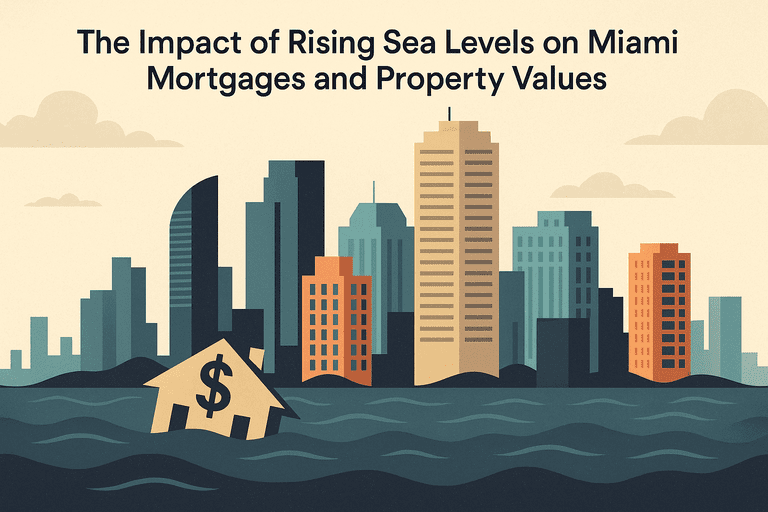Miami is often called “ground zero” for climate change, and for good reason. Rising sea levels, stronger storms, and frequent flooding are reshaping the city’s housing market. For homebuyers, this isn’t just an environmental issue — it’s a financial one.
Mortgage approvals, insurance requirements, and long-term property values are all being influenced by climate risks. That’s why working with a Miami mortgage broker is more important than ever: brokers understand how these factors impact financing and help buyers make informed decisions.
How Rising Sea Levels Affect Mortgages
-
Insurance Requirements
-
More neighborhoods are being reclassified into FEMA flood zones.
-
Mandatory flood insurance increases monthly costs, impacting loan approval.
-
-
Lender Risk Assessments
-
Some lenders are cautious about financing homes in high-risk coastal areas.
-
Others may require larger down payments or higher reserves.
-
-
Shorter Loan Terms
-
In certain areas, lenders may prefer shorter loan terms to reduce long-term exposure.
-
Property Value Concerns
Rising sea levels also affect long-term property values:
-
High-Risk Areas: Waterfront neighborhoods may see slower appreciation or even declining values if flooding becomes frequent.
-
Climate Gentrification: Higher-elevation areas like Little Haiti and Allapattah are seeing increased demand.
-
Resale Challenges: Future buyers may face stricter financing rules, lowering demand for certain properties.
Miami Neighborhoods Most Affected
-
Vulnerable to Flooding: Miami Beach, Key Biscayne, Sunny Isles, parts of Brickell.
-
Gaining Popularity: Higher ground areas like Little Havana, Westchester, and El Portal.
Understanding these shifts is key when choosing where to buy.
Loan Options in Flood-Prone Areas
-
Conventional Mortgages: Allowed if flood insurance is secured.
-
FHA Loans: Still available, but buyers must budget for insurance.
-
Portfolio Loans: Private lenders may offer more flexibility in high-risk zones.
-
Foreign National Loans: International buyers can still purchase, but with stricter terms.
How a Mortgage Broker Helps Buyers Navigate Climate Risks
A Miami mortgage broker adds value by:
-
Reviewing flood maps and insurance requirements early.
-
Connecting buyers with lenders willing to finance in coastal neighborhoods.
-
Helping calculate total monthly payments (mortgage + insurance + taxes).
-
Advising on alternative neighborhoods less affected by rising seas.
-
Exploring flexible financing programs for waterfront buyers.
Tips for Buyers Concerned About Rising Seas
-
Check Flood Zone Maps Before Buying.
-
Budget for Higher Insurance Premiums.
-
Look Into Elevation Certificates: These can reduce premiums.
-
Consider Resale Value: Think long-term about market shifts.
-
Work With Local Experts: Brokers and insurance agents familiar with Miami’s climate challenges can save you money.
Conclusion
Rising sea levels are changing Miami’s housing and mortgage landscape, but that doesn’t mean buyers should avoid the market. With the right planning and expert guidance, you can still purchase your dream home while protecting your investment.
A Miami mortgage broker helps you understand climate-related risks, navigate lender requirements, and secure financing that makes sense today and in the future.
👉 Thinking about buying in Miami’s waterfront or high-risk areas? Contact My Miami Mortgage Broker today to explore your options and make a confident decision.






